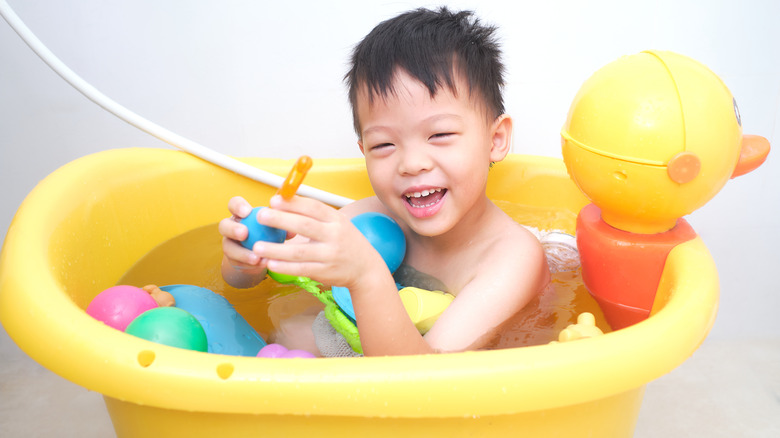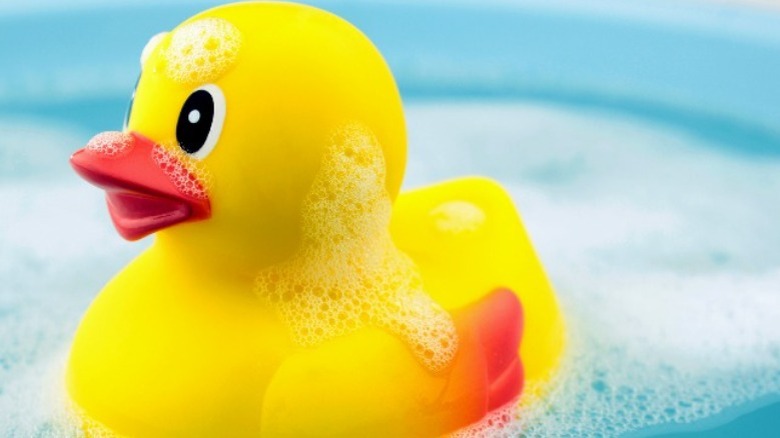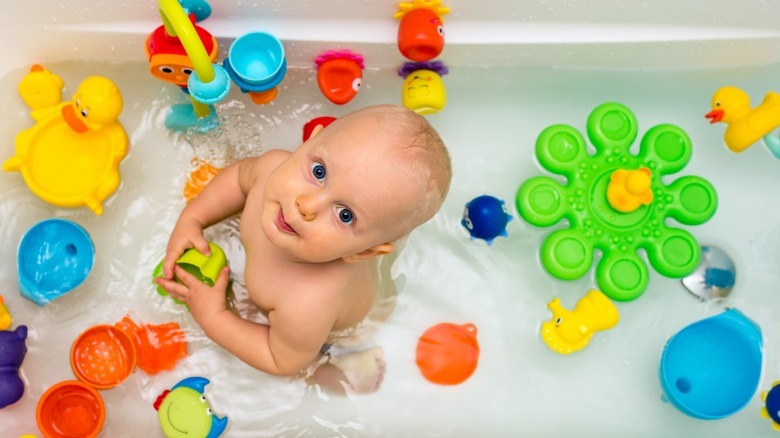How Often Should You Be Cleaning Your Kids' Bath Toys?
Bathing young kids is often a nighttime ritual for them to play with a tub full of toys while their parents help them wash off the sweat and dirt of the day. However, bath toys also need to be cleaned on a regular basis. It seems out-of-place to think that bath toys can be a source of mold and bacteria. But those soft, plastic toys, like a rubber ducky, have a small hole in them that lets in air so the toy can float. It also lets in water, turning the toy into a fun squeeze toy. That combination of water, dirt and soap scum gets inside the toy and creates the perfect environment for an unwelcome science experiment ... growing mold and bacteria.
Nature, one of the world's leading science journals, published the results of a study which revealed that flexible plastics, typically used to make bath toys, are especially known for growing fungus and bacteria. All of the toys they tested were found to contain a slimy film on their interior surfaces. Indeed, it's pretty difficult to get out all of the water and clean the inside of those toys.
So, how often should you be cleaning your kids' bath toys to get rid of the "yuck" factor? According to The Maids, you should clean all bath toys at least once a week and more frequently if someone is sick. Below are two medical sources and a toy manufacturer's recommendations for how to clean and disinfect toys.
Be on the lookout for mold
ChildrensMD is a website published by the Childrens Mom Docs, a group of pediatricians from St. Louis Children's Hospital and the Washington University School of Medicine. They start off by recommending that any bath toy with mold inside be thrown out.
Mold is a group of fungi. Childrens Mom Docs explains that although mold is harmful when ingested, the amount of mold in bathwater from contamination of the moldy bath toys is usually not enough to make your child sick. However, if you see signs of nausea, vomiting, diarrhea, or an upset stomach, those could be the effects of ingesting mold, just like food poisoning from moldy food. Always check with your child's pediatrician about these symptoms. If your child has a mold allergy or an immunocompromised condition, even a small amount of mold ingestion could make your child extremely sick.
So, how do you clean a special toy that your child wants to keep? Childrens Mom Docs says you can put it in a mixture of ¾ of a cup of bleach and 1 gallon of water. Soak the toy overnight and then remove it from the solution and let it air dry completely. If you do not see or smell any mold on the toy, it can go back in the bath but check it carefully for any moldy regrowth. All bath toys should be washed on a regular basis.
Hard plastic bath toys are easy to clean and sanitize
You can also clean bath toys with white vinegar, which the Childrens Mom Docs group says is an acceptable substitute for bleach. Make a solution by mixing 1 gallon water with ½ cup of white vinegar and soaking the toys in it for about an hour and then let them air dry. For squirting toys, Regalo, a manufacturer of baby products, recommends squeezing the toy to suck up the vinegar solution several times, and squirting it back out. Rinse with water if they still smell like vinegar before setting them out to dry completely.
For days when you are not using a disinfecting method, dry bath toys after each bath by shaking them off well and letting them dry overnight. If you decide to use your dishwasher to clean toys, check with the manufacturer to make sure they are dishwasher safe, and use the top rack to prevent the plastic from melting.
Hard plastic toys that don't have an opening are the best choices to prevent mold and bacteria. Lego has come up with a line of floating bath toys designed to be easily openable by adult hands for draining the water and cleaning. Remember, you still need to clean these bath toys regularly with either a bleach and water solution or a vinegar and water solution and allow them to dry thoroughly. Following these cleaning guidelines will help keep bathtime fun without anyone feeling sick from the bathwater.


